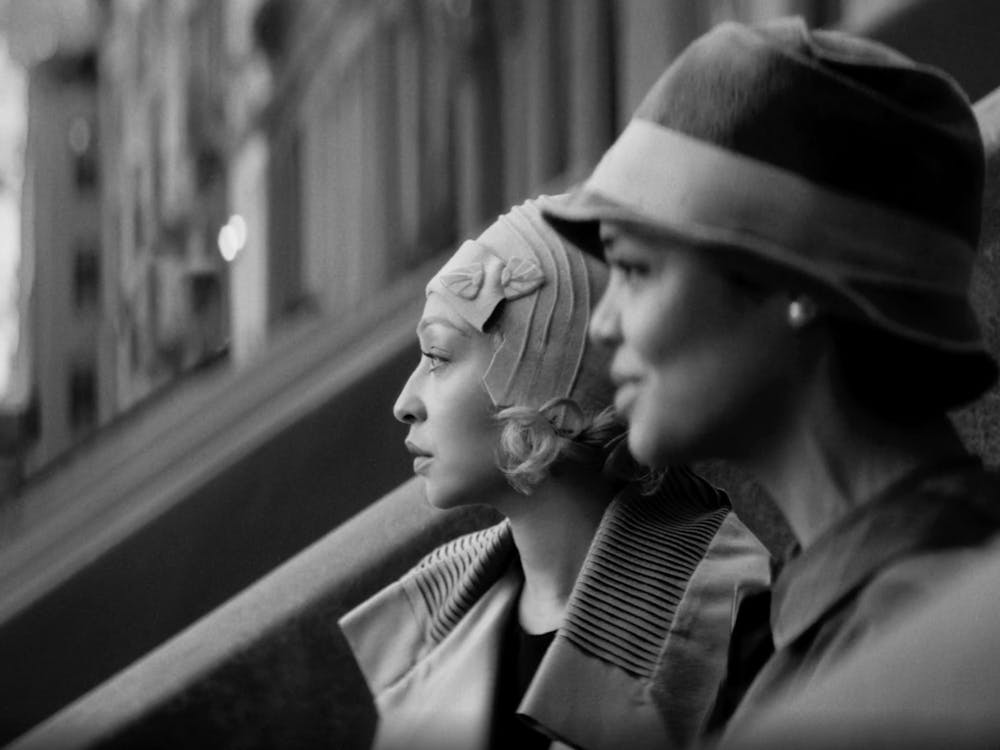“Passing,” actor Rebecca Hall’s shining directorial debut, reproduces the finest details of Nella Larsen’s brilliantly crafted 1929 novel. In the face of the seemingly insurmountable challenge of bringing Larsen’s delicate prose to life, the 2021 Netflix production mesmerizes the audience with the same poetic, dream-like quality of Larsen’s words.
Hall demonstrates her acute sensitivity to subtleties and conveys the unsaid through stylistic choices, opting for the old Hollywood aesthetic of 4:3 ratio shots and a black-and-white film instead of color. Each aspect of the adaptation is carefully constructed to bring to life a literary classic in a movie worthy of the same status.
Written during the Harlem Renaissance, Larsen’s “Passing” tells the story of Irene Redfield (Tessa Thompson) and her relationship with Clare Kendry (Ruth Negga), two childhood friends who, while African American, are able to pass as white women because of their mixed heritage. Larsen holds a mirror to 1920s New York — the boisterous, decadent scene of the Flapper Era. With the sharp reflection of racial segregation, the loose threads of the cultural moment begin to unravel. Discussing race, womanhood and sexuality — and all their intersections — Larsen offers a portrait of the famed decade, but also a timeless tale on the construction of identities.
The audience catches its first glimpse of Irene as she navigates bustling downtown New York shops with an efficiency that borders on invisibility. After almost passing out from the heat, Irene grabs a cab to the fictional Drayton Hotel. She deftly steps into the tea room, an opulent space predominantly frequented by white patrons. Conveniently passing as a white woman, she powders her imperceptibly darker skin. The camera follows her as she begins to observe the other customers. Her fascination and amusement reveal her tendency to both wonder about and reject notions of different possibilities, different alternatives to her current social position — an upper-middle class Black woman who occasionally passes as white for small conveniences, like a break in a tea room, but nothing more.
Just as we adjust to the gaze of an observant woman who goes unobserved, we abruptly meet Clare Kendry, sitting on the next table, who stares at Irene openly and unflinchingly. With a single shot, we are introduced to the two main characters, starkly opposite to each other in nature. Clare’s fair complexion and piercing eyes announce a woman who not only catches the attention of passersby but also feels comfortable under the spotlight.
Irene panics under the other woman’s scrutiny, having failed to recognize Clare — could this white woman catch her in the act of passing? Yet as Clare moves towards Irene, surprising her with an affectionate “Renie” and a melodious laugh, the scene’s tension subsides.
Childhood friends, estranged during their late adolescence and early adulthood, are reunited when Clare’s husband John (Alexander Skarsgård) visits the city for work. It is at that moment that we become privy to Clare’s secret: Unlike Irene, who passes for brief, unnoticed stints, Clare has completely hidden away her Black identity. The secret is not only kept from society, but from Clare’s own husband, who, as Irene discovers in an anxiety-filled scene, reveals nonchalantly to hate African Americans “as much as his wife.”
Despite the danger of her situation, Clare gradually slips back into Irene’s Harlem community, inserting herself into the latter’s daily life: husband, children, friends that “could not pass.” While Irene shows concern over the security of her friend’s secret, Clare’s catlike personality, a perfect balance of fearlessness and docility perfectly portrayed by Negga, makes it impossible for Irene to cut ties.
Clare’s lavishness, beauty and mystery both enthrall and repel Irene who, while seeming to condemn Clare’s lifestyle, turns the friend into a measure against which she evaluates her own life. Soon Irene starts to feel isolated by her adherence to social boundaries, trapped within her loneliness.
Both ethereal and extremely grounded, the stage-play-like production, with its limited number of sets and powerful dialogue, captures the theatrics of Larsen’s novel. Constantly crafting and unveiling illusions of identity, the encounters, relationships and emotions of “Passing” are always more complex than what our first instincts suggest.
The psychologically charged nature of the story is met with symbolic shots of cracked ceilings, broken vases and first snowfalls, hypnotizing the audience with the same cadence of Clare’s alluring voice. While aesthetically soft and appealing, the movie remains loyal to the cruel, hard truths of reality — segregation, racism, inevitable betrayals — that influence the narrative.
The adaptation is not only faithful to Larsen’s work; beyond the exquisite delivery of plot, characters and dialogue, the movie reaches the novel’s core, matching even its tone, rhythm and concerns. Warm and cold, inviting and haunting, the movie meditates on the deeply emotional consequences of racial segregation and the human search for identity with all its dilemmas and delusions. After all, as Irene observes, “We’re all of us passing for something or other, aren’t we?”

Julia Vaz was the managing editor of newsroom and vice president on The Herald's 134th Editorial Board. Previously, she covered environment and crime & justice as a Metro editor. A concentrator in political science and modern culture and media, she loves watching Twilight (as a comedy) and casually dropping the fact she is from Brazil.





